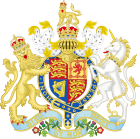| Act of Parliament | |
 | |
| Long title | An Act to prohibit the exhibition or distribution of cinematograph films in connection with the production of which suffering may have been caused to animals; and for purposes connected therewith. |
|---|---|
| Citation | 1 Edw. 8. & 1 Geo. 6. c. 59 |
| Dates | |
| Royal assent | 30 July 1937 |
| Other legislation | |
| Relates to |
|
Status: Current legislation | |
| Text of statute as originally enacted | |
| Text of the Cinematograph Films (Animals) Act 1937 as in force today (including any amendments) within the United Kingdom, from legislation.gov.uk. | |
The Cinematograph Films (Animals) Act 1937 is an Act of the Parliament of the United Kingdom (1 Edw. 8. & 1 Geo. 6. c. 59). It defines a criminal offence of distributing or exhibiting a film that was "organised or directed in such a way as to involve the cruel infliction of pain or terror on any animal or the cruel goading of any animal to fury"[1] - in other words, one in which actual cruelty to animals (as distinct from simulated, e.g. through the use of special effects or CGI) was photographed and/or occurred during the production.
Offences under the Act are punishable by a fine and/or up to three months' imprisonment. Section 2 of the Act creates a valid defence that the defendant "had reasonable cause to believe" that scenes of animal cruelty in a film were simulated, not actual. The definition of an animal under the Act is that of the Protection of Animals Act 1911.
YouTube Encyclopedic
-
1/3Views:2 4807931 198
-
Jean-Louis Cohen, "The Art of Zigzag: Le Corbusier’s Politics"
-
Underground Man by Gabriel Tarde (audiobook)
-
History of animation
Transcription
History
It is unclear why the Act was passed when it was, or if any single event prompted it to be put before Parliament. Concern had been expressed in the press during the early to mid-1930s at scenes in mainstream feature films that were suspected of showing actual animal cruelty, one prominent example being Island of Lost Souls (1932). According to the British Board of Film Classification's website, the Act was a response to "widespread public concern about the mistreatment of animals on film sets, especially in Westerns."[2]
Contemporary usage
The Act has never been repealed, and remains in force. The British Board of Film Classification (BBFC), in keeping with their policy of not sanctioning the release of any film if it believes that the release itself could constitute a criminal act, will occasionally refuse a certificate or require cuts to scenes it suspects involve actual animal cruelty. A notable case was the UK release of Amores perros in 2001, in which the BBFC accepted the producers' claim that controversial dog fighting scenes were simulated, not actual, and passed the film uncut.[3]
The phrase 'cruel infliction' is understood to mean cruelty to animals that was specifically and gratuitously inflicted with the sole purpose of creating an entertainment film. Therefore, for example, the screening of a documentary about bullfighting or an educational film about vivisection in medical research would be unlikely to result in prosecution under the Act, because any footage of actual animal cruelty would be of an event that would have taken place regardless of whether or not it had been filmed, and the purpose of screening that footage is not entertainment. However, a film such as Electrocuting an Elephant would probably fall foul of the Act (had it been in force at the time), as the electrocution took place primarily as a public spectacle, and it was filmed purely for popular entertainment purposes.
References
- ^ Section 1 of the Act, retrieved 26 May 2012
- ^ Students' BBFC - Criminal Law Archived 2012-03-15 at the Wayback Machine, retrieved 26 May 2012
- ^ Review of the Film in The Daily Telegraph, 4 May 2001, retrieved 26 May 2012
Further reading
- Hunnings, Neville March, Film Censors and the Law, London, George Allen & Unwin (1967), ISBN 978-0047910142.
- Richards, Jeffrey, The Age of the Dream Palace: Cinema and Society in Britain, 1930–1939, London, Routledge (1984), ISBN 978-0710097644.
External links
- Full Text of the Act
- BFI Screenonline article.
